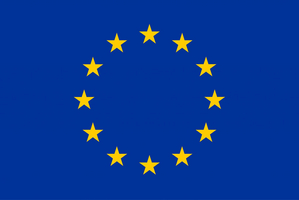Overall approach
The current predominant steel production process routes involve a combination of blast furnace (BF) and basic oxygen furnace (BOF), or an electric arc furnace (EAF). However, to achieve the objective of climate neutrality by 2050 according to the European Green Deal, the BF-BOF route will be progressively replaced by new, CO2-lean technologies. Complementing the goal of decarbonising the European steel industry and a successful implementation of these breakthrough technologies, the concept of circular economy needs to be maintained. As the generation of slag is an inevitable aspect of the steel making process, its sustainable recycling or utilisation instead of landfilling is an important contributor to a circular economy and to a reduction of CO2 emissions.
The future iron and steel making processes using direct reduced iron (DRI) and hot briquetted iron (HBI), as well as technologies such as hydrogen plasma smelting reduction or electric smelters, will lead to an increase in electric arc furnace slag and to slags with modified properties. Consequently, opportunities for their recovery and innovative applications need to be developed to allow utilization of these slags in other sectors (e.g., road construction or cement). Within the InSGeP project five steel plants, six RTOs and two plant manufacturers will examine slags generated by next-generation steel making processes.
Objectives
The InSGeP project aims to understand the potential impact of next generation steel production on the resulting slag. Therefore, their chemical, mineral, ecological and physical properties are analysed and evaluated. To develop possible recycling or valorisation routes, the slags are processed using different cooling and granulation methods and assessed regarding the physical properties required for diverse applications and their environmental compatibility. Based on these findings, guidelines for the use of slags from the next generation of steel making will be developed.
Project timeline:
1 July 2023 – 30 June 2027
Funding scheme:
The project receives funding from the European Union within the frame of Research Fund for Coal and Steel (RFCS, Grant Agreement no. 101112665).
Project consortium:
The consortium consists of 13 partners from six different European countries and is comprised as follows, starting with the coordination:
- FEhS – Institut fuer Baustoff-Forschung e.V.
- ArcelorMittal Maizieres Research SA
- Centre de Recherches Metallurgiques ASBL (CRM Group)
- K1-MET GmbH
- O.R.I. Martin – Acciaieria e Ferriera di Brescia S.p.A
- Primetals Technologies Austria GmbH
- RINA Consulting – Centro Sviluppo Materiali S.p.A
- Saarstahl AG
- Scuola superiore di studi universitari e di perfezionamento Sant'Anna
- Sidenor Investigación y Desarrollo
- Tenova SPA
- VDEh-Betriebsforschungsinstitut GmbH
- voestalpine Stahl GmbH

 DE
DE EN
EN
